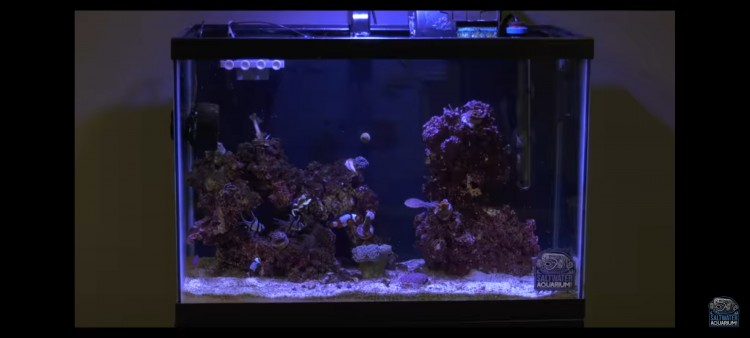What are Acceptable Nitrate and Phosphate Levels in Reef Tanks?
- Apr 20, 2024
- Anshika Mishra
- 86 0 0

Nitrate and phosphate are some of the most hotly debated topics in the hobby. No satisfying answer exists that even a majority agrees on, but there are better pasts than others and mentalities that lead to higher success rates.
In this article, we'll share all your research, supporting evidence, science, and experience.
What is the Right Level?
No answer is universal; it has to be applied to a goal. Your levels should not just be appropriate for hardy corals but also for moderate to even sensitive corals with the highest multi-year success rates. Here's an approach that doesn't require you to play mad scientist with a tank addicted to removal media, chemicals, or constant nutrient testing.
And how to use the test results that we perform and adjust them when the inevitable challenges come forth.
Phosphate Levels
First, let's select our range for inorganic phosphate at a goal of 0.01 ppm but an operating range of 0.05-0.15 ppm that provides a buffer in either direction. If it goes outside that, you need to act and make changes to your approach of what or how much you feed, filtration, dilution or water changes.
0.05-0.15 ppm phosphates are achievable with a wide range of skillsets, common equipment, and maintenance practices done right. These practices shouldn't require the use of constant phosphate removers, while GFO solutions like lithium chloride removers are great for solving periodic problems.
You want to avoid their constant use of media and chemicals that both add to or remove many other elements and pollutants indiscriminately.
This is a range where any material negative phosphates might have is outweighed by the benefits of an easy to achieve zones. Some reefers might argue higher or lower, and that's fine. Any reasonable goal range will be more successful than no goal.
Use your best judgment. Too much of a good thing can become a pollutant or poison. The only thing you should care about is not perpetually rising every month because that's the path to nowhere good. Smoking is not directly responsible for mortality but for other stresses or subtle changes in health and coloration that may not be noticed if the effects are gradual.
If it's rising month after month, change how you feed and up your filtration game. There are a bunch of phone app options out there which are just a few bucks to free. Plus, most controllers come with monitor apps that have graphing functions.
Nitrate Levels
As to nitrate levels, this might be the most commercial statement: Have no specific nitrate goal. Just let it land where it is going to land. The range of nitrate/phosphate ratios in most fish food is 5:1 to 30:1. Considering uptake in the tank, that means that our goal of phosphate should produce about 0.25 to 4.50 ppm. I'd be most happy if it's in the middle of that, around two parts per million.
Once you consider the different biological uptake ratios of various fish and corals, the ratio might be different. But the point is to get phosphate stable without removers and then track nitrate monthly in your app to see where it stabilizes.
Nitrogen and Phosphate in Your Tank
Make sure the corals have organic nitrogen and phosphorus levels—good fish food, a healthy amount of fish, and a dose of amino acids from a particular food; some animals who eat larger prey should receive that, so use the right filtration.
There is a difference between organic and inorganic sources of nitrogen. Inorganic options are nearly completely broken down and testable using nitrate and phosphate test kits. Organic nitrogen is also readily available for uptake by algae and other pests.
Organic nitrogen and phosphorus are harder to test for. Many sources of these foods are biologically less available for uptake by other algae. Some corals are not dependent on inorganic nitrate and phosphate. The corals, however, may adapt to the inorganic options when organic nitrogen and phosphate-containing prey are simply not available.






About author